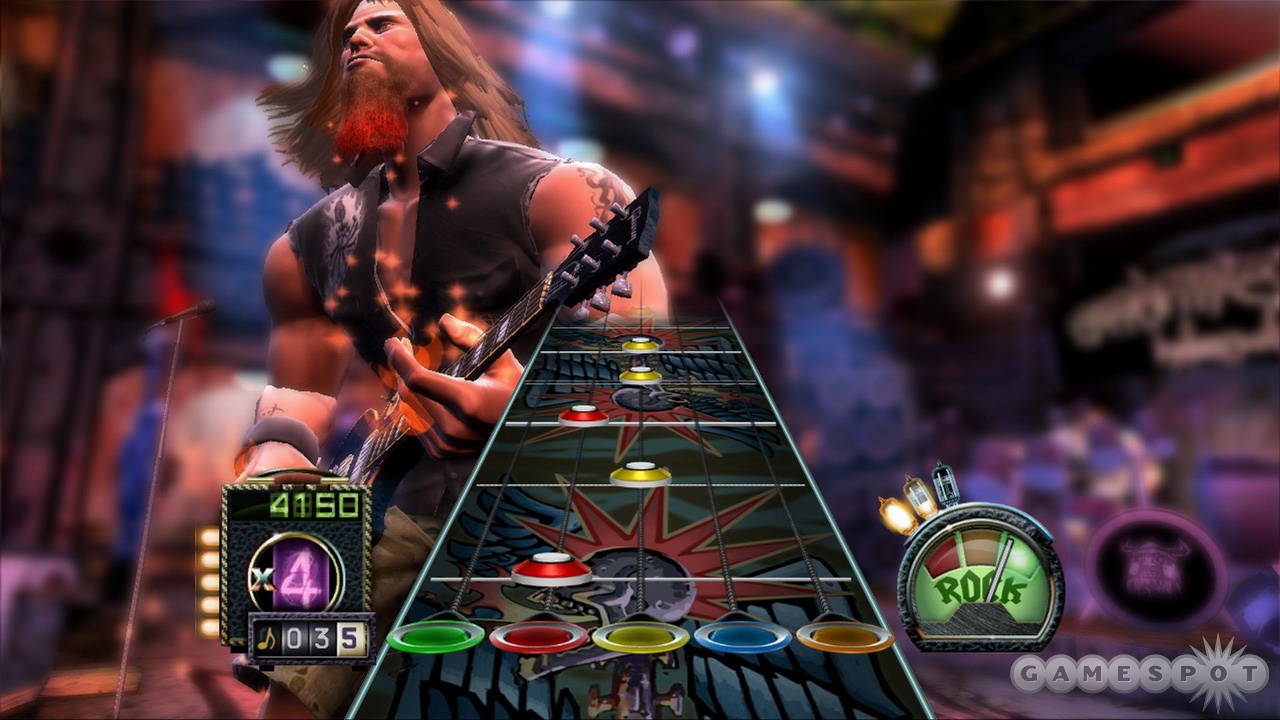Guitar Hero III Developer Diary #1
Meet the guys who turn music into gameplay in Neversoft's Guitar Hero III.
One of the many beauties of the Guitar Hero franchise is its straightforward nature: strap on a guitar, pick a song, and get to rocking. That's pretty much it. But behind that relatively simple approach to gameplay is a complex process of analyzing all those brilliant guitar lines, transcribing them, and then translating that music into something that can be played on a five-button replica guitar. Enter the note-tracker team at Neversoft, the guys who pick apart all the music you'll be playing in the upcoming Guitar Hero III and turn it into gameplay. In this developer diary, Neversoft note tracker/MIDI designer John Knutson takes us through the process of turning rocking tunes into a rocking game.
Plotting Notes on the Highway
By John Knutson, Neversoft
Hey, there. I'm John "Bunny" Knutson, note tracker/MIDI designer for Guitar Hero III. When Neversoft took over the development of the Guitar Hero franchise, our team of note trackers was assembled to handle the creation of the note charts in the game. We note trackers decide where to plot the notes that you play in the game, and we also assign animation commands for the onscreen characters and light shows. Essentially, we dictate most of the action that the player sees on the screen, using commands to trigger animations created by Neversoft's amazing animation department.

The members of our team have a wide range of background experience, including two note trackers who were creating custom note charts long before they started working for Neversoft--experience which ultimately landed them jobs working on the real game. One of our team members has extensive experience creating MIDI transcriptions for Yamaha, and a solid background in live band performance and recording. Another note tracker is a monster musician who was working in QA for Activision and transferred to Neversoft. The most recent member to join the team has been composing video game music independently for years and has ample experience performing live. All of us are musicians, of course.
My experience comes mostly from the school of hard rock. I've been playing electric guitar professionally for over 20 years, having played in several Bay Area bands throughout the '90s and '00s, including punk band No Use for a Name. I've toured internationally, and have been heavily involved in recording and production, including three internationally released albums I've produced. My recent experience comes from independent contract work for Motorola, doing MIDI transcriptions and ringtone development.
Aside from plotting the notes on the "highway," we are also responsible for sequencing animation commands for the onstage characters' actions. We choose from a selection of movements and actions preprogrammed by our animation department--like deciding when to make Johnny Napalm jump or Judy Nails raise her guitar for an inspired solo.
Another of our tasks is to program a dramatic light show for the song. Often, we'll refer to YouTube videos of live performances, or memories from concerts attended, for inspiration for our light shows. When I programmed the light show for Metallica's "One," I relied on both of these resources to make it resemble the actual "One" concert light show as closely as possible.
With GHIII, the programmers here at Neversoft have implemented a convention that allows us to place manual hammer-ons and pull-offs (HOPOs). This is different from previous iterations of the game, in which HOPOs were automatically inserted only in phrases with a fast series of notes. One of the big benefits of this new HOPO convention is that it allows us to place HOPOs after long, sustained notes if they occurred that way in the original song. It also allows us to simulate long string bends, whereas only quick bends were possible in previous GH games.

Programming a note chart can be very challenging and even frustrating at times. Plotting the main guitar solo in "One" comes immediately to mind. Kirk Hammett plays such blisteringly fast HOPOs in the first part of the solo that transcribing it accurately seemed nearly impossible. I listened to it dozens of times, and even slowed it down to half-speed, but still couldn't make much real sense of it. Ultimately, I came up with an acceptable interpretation for gameplay, but only after trying out several different versions first.
By far the most challenging note chart I produced was the final boss battle. There are two fast-paced theme riffs that each occur twice in the song, in addition to 26 sections of extremely fast shredder solos. It literally took days of hard work to complete that note chart. In the end, though, it's very rewarding work, as I watch players enthusiastically battle their way through to eventual victory.
Got a news tip or want to contact us directly? Email news@gamespot.com
Join the conversation